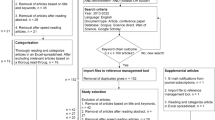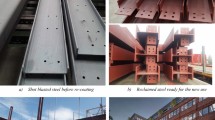Abstract
Precut means the machining of timber joints of building members for Japanese conventional wooden house construction (post and beam construction) at a factory instead of hand cutting by a carpenter. The building members machined at precut factories are called precut lumber. Most precut factories are machining mainly structural members. Although the number of precut factories increased rapidly to over 800 during a 20-year span, it has since remained at the same level and has probably reached its peak. However, the proportion of precut houses to new wooden housing starts will likely increase in future in spite of the peak of the number of precut factories, because precut has many advantages. Many precut factories have been using CAD and CAM systems. Precut factories have helped to simplify the complicated distribution structure of lumber in Japan.
Zusammenfassung
Als „Precut“ bezeichnet man die maschinelle Vorfertigung von Holzverbindungen in Bauteilen für den konventionellen japanischen Hausbau (Pfosten- und Balkenkonstruktion) in einer Fabrik, anstelle der manuellen Fertigung durch einen Zimmermann. Die auf diese Weise maschinell gefertigten Bauteile heißen „Precut Lumber“. Der Großteil der Vorfertigungsfabriken stellt hauptsächlich Baukonstruktionsteile her. Obgleich die Anzahl der Vorfertigungsfabriken während einer Zeitspanne von 20 Jahren rapide auf über 800 gestiegen war, trat inzwischen längst ein Stillstand dieser Entwicklung ein, so dass der Höhepunkt längst erreicht ist. Jedoch wird der Anteil der Vorfertigungshäuser im Vergleich zu modernen Holzhäusern in Zukunft trotz des Stillstandes in der Anzahl der „Precut“ Fabriken wahrscheinlich zunehmen, da dieses Verfahren viele Vorteile bietet. Viele Vorfertigungsfabriken benutzen CAD und CAM Systeme, und haben so dazu beigetragen, die komplizierte Verteilungsstruktur ihrer Holzbauteile in Japan zu vereinfachen.







Similar content being viewed by others
References
All Japan Wood Housing Machine Precut Association (2002) Report of distribution of lumber in precut industry
Forest Products Administration Workshop (1990) State of wood supply and demand and wood industry
Ikami Y, Murata K, Takano T, Fujimoto K, Matsumura Y (2003) Generation and utilization of wood residue at precut factories. In: Abstract of the 53rd Annual Meeting of the Japan Wood Research Society, Fukuoka, pp 598
Japan Federation of Wood-industry Associations (1988) State and analysis of sawmills No.12. Japan Federation of Lumber Associations, Tokyo, pp 36–37
Japan Federation of Wood-industry Associations (1991) State and analysis of sawmills No.15. Japan Federation of Lumber Associations, Tokyo, pp 36–37
Japan Forest Products Journal (1997) Report of Japanese precut industry
Japan Forest Products Journal (2001a) Report of Japanese precut industry
Japan Housing and Wood Technology Center (2001b) State of wood supply and demand and wood industry, pp 193
MAFF Statistics and Information Department (2002) Basic statistics on lumber. The Ministry of Agriculture, Forestry, and Fishery of Japan, Tokyo, pp 1–6
Author information
Authors and Affiliations
Corresponding author
Rights and permissions
About this article
Cite this article
Matsumura, Y., Murata, K. Analysis of precut industry in Japan. Holz Roh Werkst 63, 68–72 (2005). https://doi.org/10.1007/s00107-004-0528-4
Published:
Issue Date:
DOI: https://doi.org/10.1007/s00107-004-0528-4




